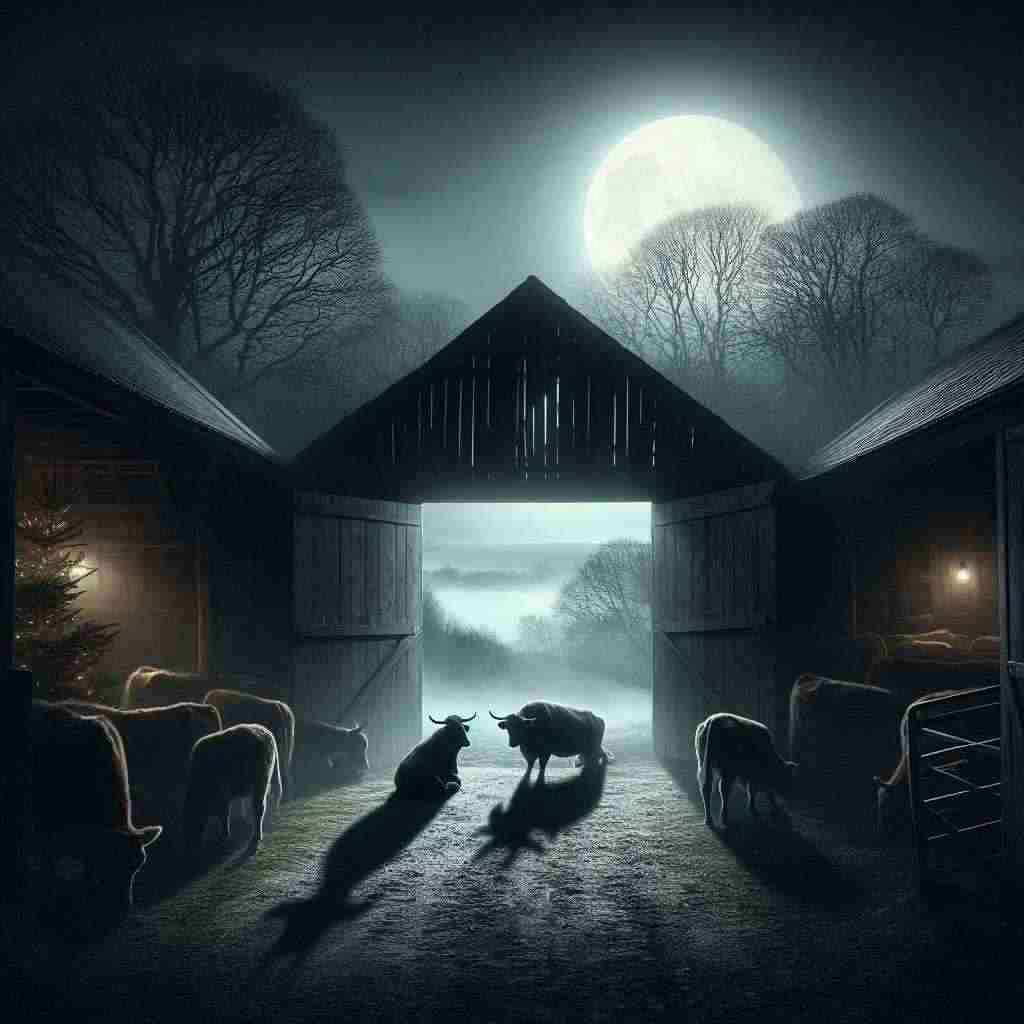The Oxen
Thomas Hardy
1840 to 1928

Want to track your favorites? Reopen or create a unique username. No personal details are required!
Christmas Eve, and twelve of the clock.
"Now they are all on their knees,"
An elder said as we sat in a flock
By the embers in hearthside ease.
We pictured the meek mild creatures where
They dwelt in their strawy pen,
Nor did it occur to one of us there
To doubt they were kneeling then.
So fair a fancy few would weave
In these years! Yet, I feel,
If someone said on Christmas Eve,
"Come; see the oxen kneel,
"In the lonely barton by yonder coomb
Our childhood used to know,"
I should go with him in the gloom,
Hoping it might be so.
Thomas Hardy's The Oxen
Thomas Hardy's poem "The Oxen" is a poignant reflection on the loss of innocence and the enduring power of childhood beliefs in the face of modern skepticism. Written in 1915 during World War I, the poem juxtaposes the simplicity of rural Christmas traditions with the harsh realities of a world in turmoil, exploring themes of nostalgia, faith, and the human desire for hope in times of darkness.
The poem opens with a vivid scene set on Christmas Eve, as a group gathers around a dying fire. The elder's assertion that the oxen are "all on their knees" introduces the central myth around which the poem revolves: the belief that farm animals kneel in reverence at midnight on Christmas Eve. This folklore, rooted in the Christian tradition of animals worshipping at Christ's nativity, serves as a metaphor for innocent faith and the magic of childhood beliefs.
Hardy's use of simple, direct language and a regular rhyme scheme (ABAB) throughout the four quatrains mirrors the straightforward nature of the belief itself and the uncomplicated faith of those gathered. The imagery of the "meek mild creatures" in their "strawy pen" evokes a sense of pastoral idyll, contrasting sharply with the industrial and militaristic realities of early 20th-century England.
The third stanza marks a shift in tone and perspective, as the speaker moves from reminiscence to commentary on the present. The line "So fair a fancy few would weave / In these years!" acknowledges the loss of such simple beliefs in modern times. This transition underscores the poem's exploration of the tension between childhood innocence and adult skepticism, between faith and doubt.
Despite this acknowledgment of change, the speaker admits to a lingering desire to believe. The conditional statement "If someone said on Christmas Eve, / 'Come; see the oxen kneel'" introduces a hypothetical scenario that allows the speaker to entertain the possibility of reconnecting with lost innocence. The use of direct speech here lends an immediacy to the invitation, making it more tangible and tempting.
The final stanza continues this hypothetical journey, with the speaker imagining a return to the "lonely barton by yonder coomb" - specific local terms that root the poem in a particular rural English landscape. This specificity adds to the poem's nostalgic quality, evoking a sense of place and belonging that has been lost to time.
The poem's concluding line, "Hoping it might be so," is particularly significant. It encapsulates the central tension of the poem: the conflict between rational disbelief and emotional yearning for faith. The speaker does not claim to believe but expresses a willingness to hope, suggesting that even in a world where such beliefs are no longer tenable, the desire for them persists.
Hardy's choice to focus on this particular folk belief is telling. The image of kneeling oxen combines the earthly and the divine, the mundane and the miraculous. It serves as a powerful symbol for the intersection of everyday life and spiritual mystery, a theme that resonates throughout much of Hardy's work.
Furthermore, the poem's historical context adds another layer of meaning. Written during a time of unprecedented global conflict, "The Oxen" can be read as a longing for simpler, more innocent times in the face of modern warfare and disillusionment. The speaker's willingness to hope, despite knowing better, might be seen as a small act of resistance against the crushing realities of the world.
In conclusion, "The Oxen" is a masterful exploration of the human need for belief and wonder, even in the face of reason and experience. Through its simple narrative and evocative imagery, Hardy creates a powerful meditation on faith, doubt, and the bittersweet nature of growing older. The poem's enduring appeal lies in its ability to capture a universal experience: the simultaneous loss and retention of childhood beliefs, and the persistent hope that, against all odds, there might still be magic in the world.
This text was generated by AI and is for reference only. Learn more

